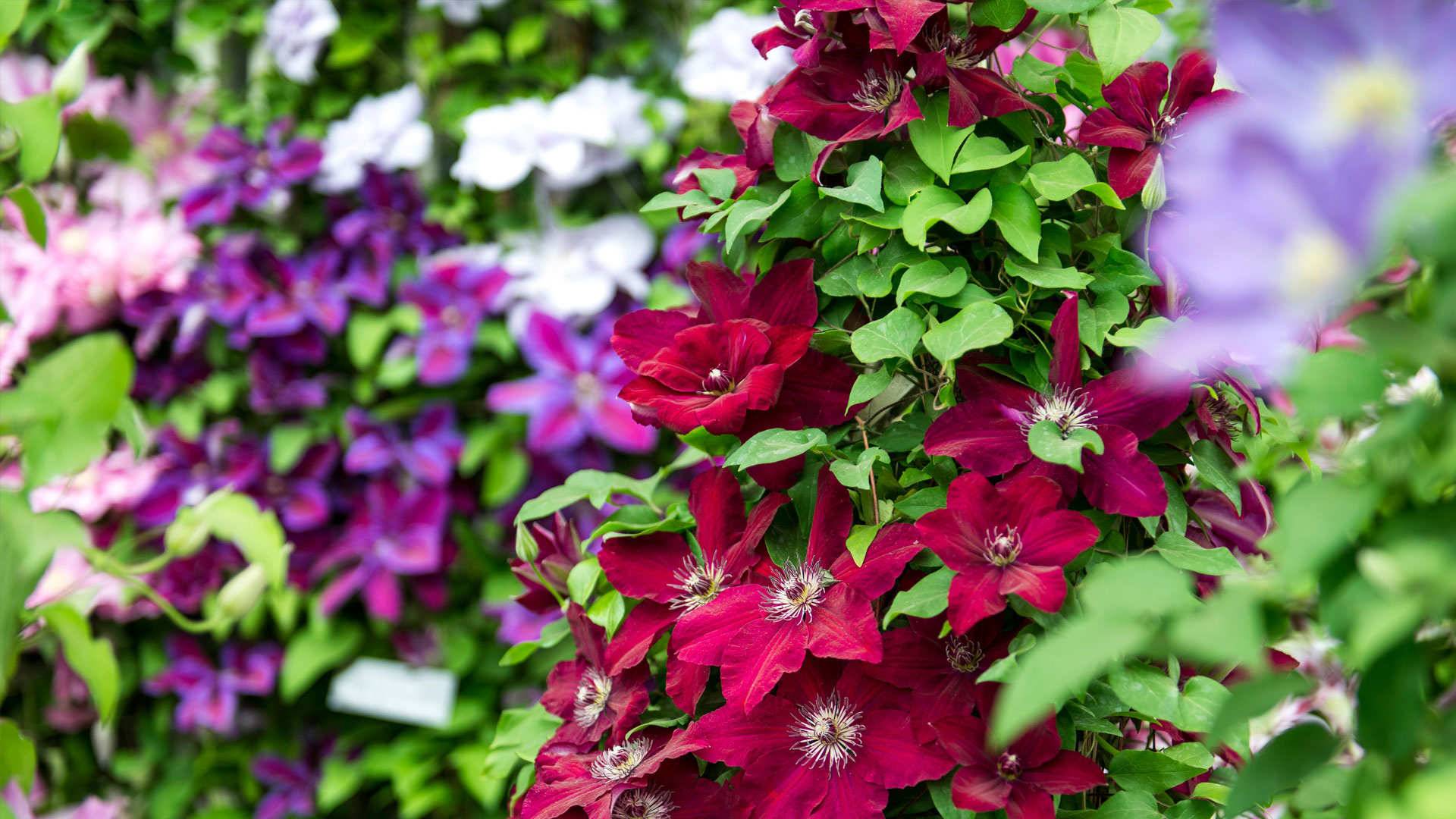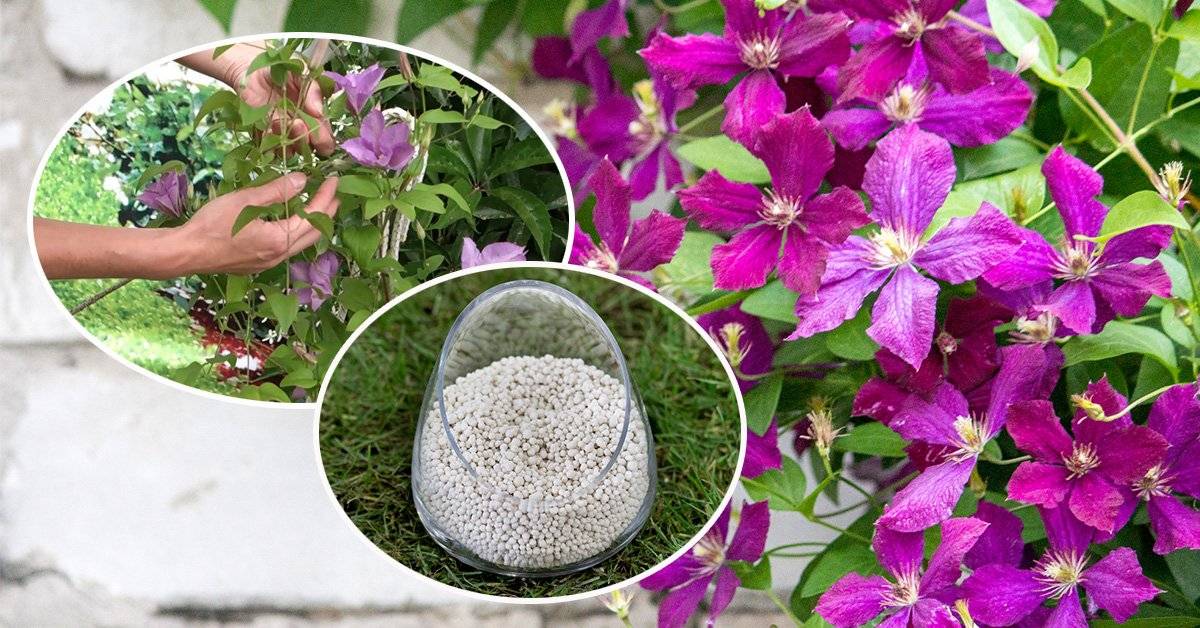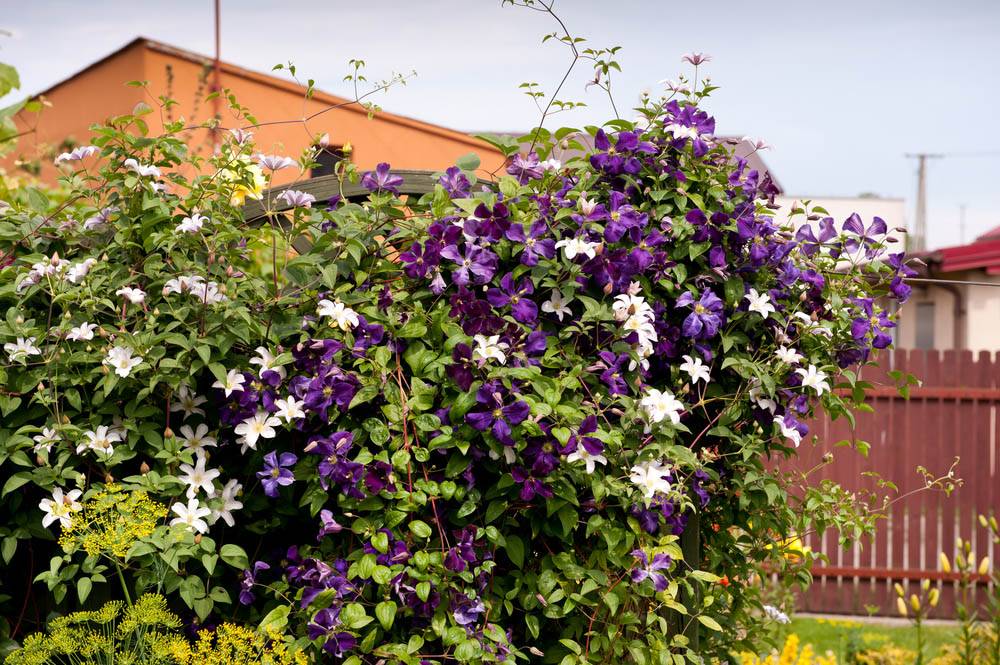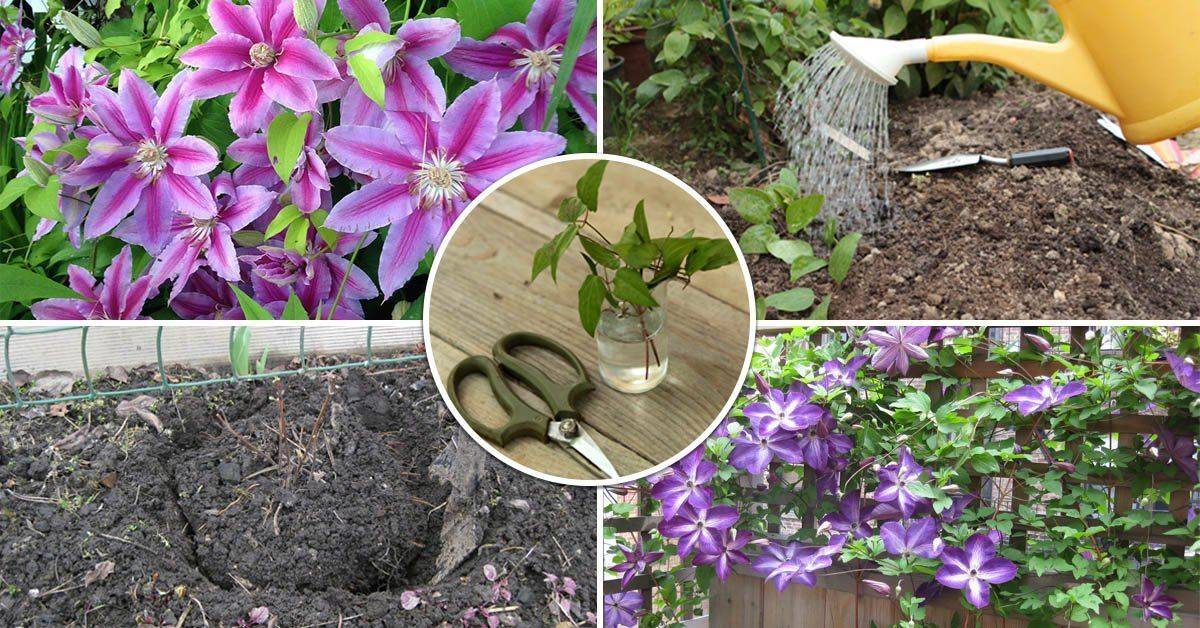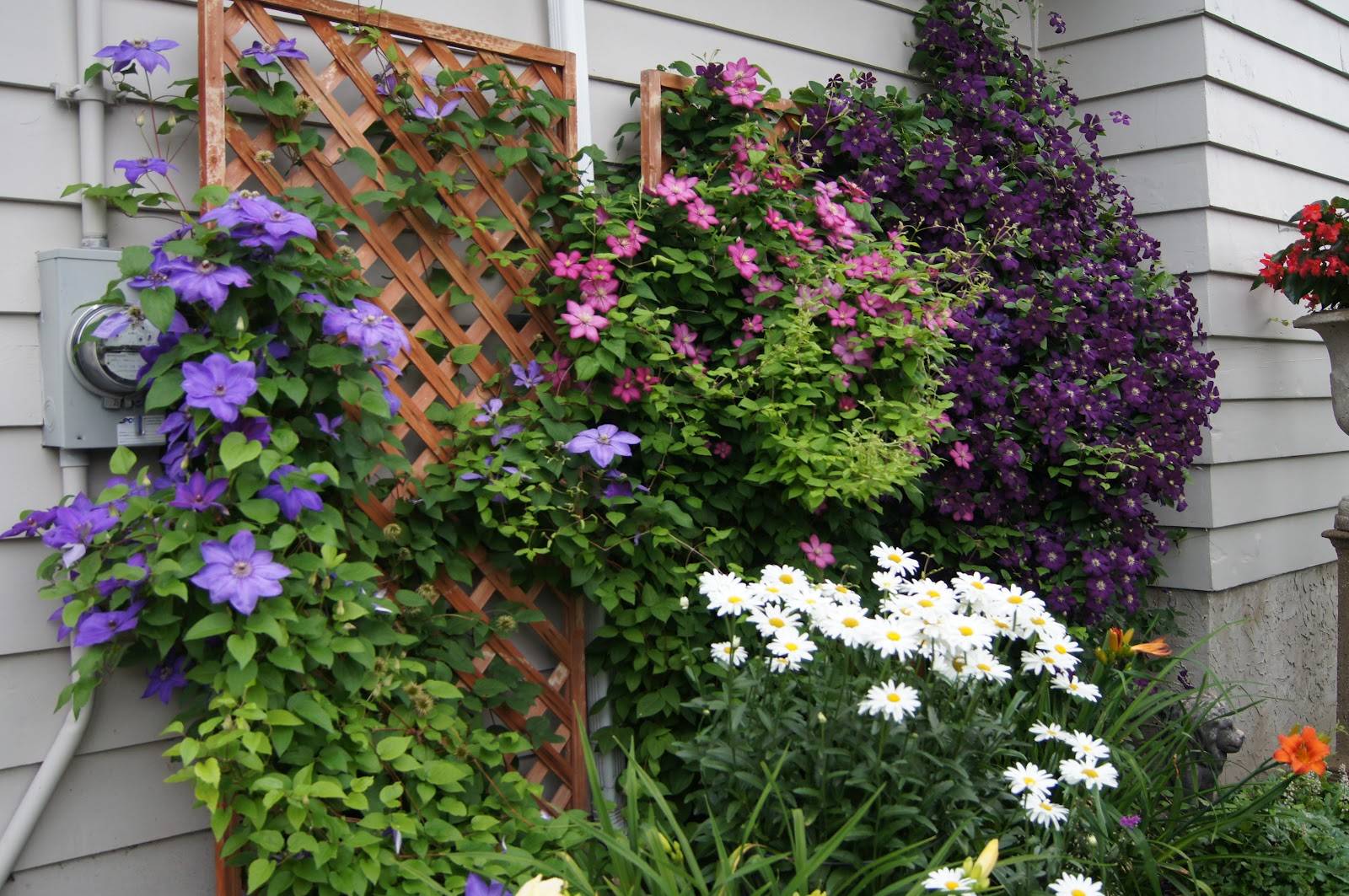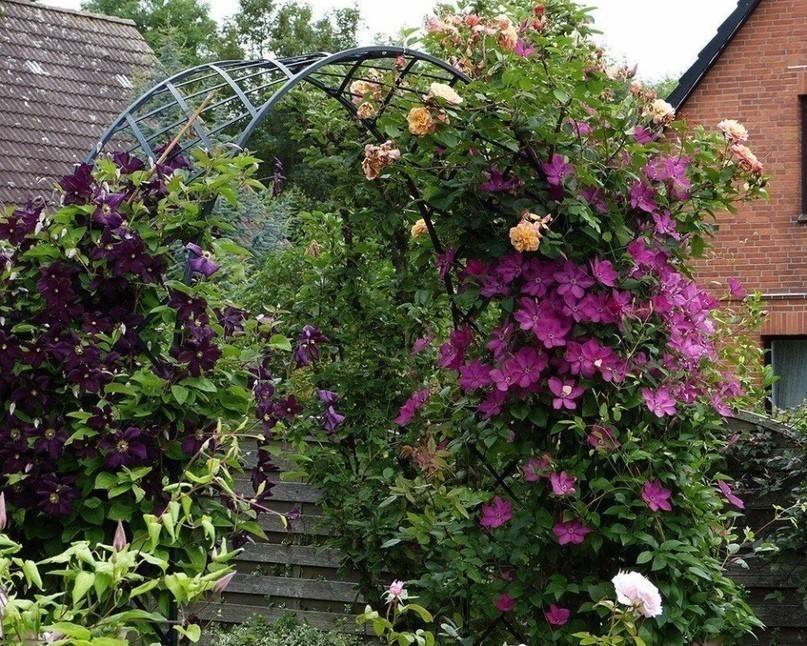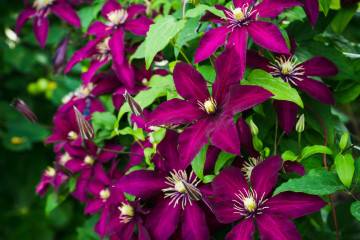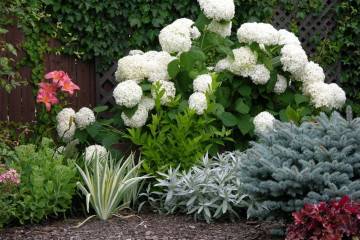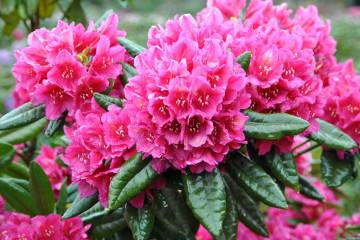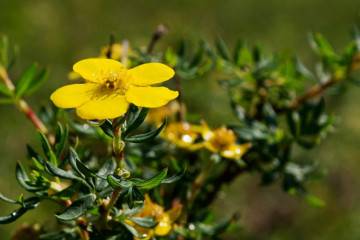How to feed clematis in spring for growth
Content:
Blooming clematis vines can decorate any garden, and the gazebos and verandas entwined with them turn into a real fabulous corner. To get a lush plant covered with flowers along its entire length, it is important to know how and with what it should be fertilized.
How to feed clematis
Man has long learned to feed cultivated crops with mineral and organic substances in order to improve the soil composition. The number of buds that the plant forms, as well as the duration of the flowering period, directly depends on the nutritional value of the soil.
Clematis (Clématis) has a powerful root system, branched up to 2 meters in diameter and penetrating to a depth of 1 meter. This growth of the rhizome is explained by the plant's need to nourish all its shoots and leaves. To help him accomplish this task, the grower must regularly feed the flower.
Organic fertilization
Scourges of some varieties of clematis can be up to 8 meters long, although the stems of most varieties rarely stretch more than 4 meters. Vines always produce many lateral branches and are covered with many racemose inflorescences. Flowers in accordance with varietal characteristics can be small (3-4 cm in diameter, rarely up to 8 cm) or large (up to 25 cm).
Experienced gardeners use organic matter for feeding clematis, which perfectly stimulates the metabolic processes of the plant, contributing to its growth, a set of green mass and the formation of flower buds. Some of the most commonly used substances include:
- wood ash;
- peat;
- humus;
- bird droppings;
- compost mixtures.
Wood ash is used in the form of an aqueous solution prepared from 1 can of a substance filled with boiling water and infused for a day. The resulting liquid is stirred in 2 buckets of settled water and poured at a distance of 30 cm from the central stem of the flower. A young flower will need 2 cups of such feeding, and an adult specimen needs a larger amount.
Fermented herbal infusions, used with a lack of nitrogen, have also proven themselves well (this is indicated by the pallor of the leaf plates). To prepare this fertilizer, they take weeds and dry leaves, put them in a barrel with the addition of a small amount of manure and fill with water about 2/3. After 2 weeks, after the appearance of a sharp characteristic odor, diluted in a ratio of 1/10 with a solution, the clematis bushes are watered.
Feeding clematis with yeast
The first 2-3 years of life, clematis bloom rarely and very little, since all their strength goes to building up a powerful root system.At this time, it is recommended to use a yeast dressing, which will provide the plant with the necessary nutrients and will promote active root formation. In addition, such fertilization often helps clematis bloom, no matter how young or old it is.
Shortly before the buds appear, the aerial parts of the flower are sprayed with yeast, repeating the procedure 2-3 times during spring and summer. To make the composition, take 100 g of live yeast, dilute them in 1 liter of warm water and leave for 5-6 hours to infuse. After a while, the solution is filtered, stirred in a bucket of settled water and irrigated with shoots with leaves.
Mineral dressing
During the spring-summer season, they resort to various fertilizing with minerals. During the period of growth of young shoots and foliage, it is recommended to introduce nitrogen-containing compounds. They are also usually used for spring planting of clematis in open ground. The use of sodium and calcium nitrate is considered optimal.
Phosphorus and potassium are the best ways to feed clematis in June, at the budding stage and in the midst of flowering. The deficiency of these elements leads to the fact that the peduncles begin to turn black, and the buds begin to wither and crumble without opening. However, it is worth knowing that the use of phosphorus-potassium fertilizer causes acidification of the soil, as a result of which the leaves may begin to turn yellow. To deal with this, you can lime the ground around the clematis.
Top dressing of clematis in spring with milk of lime
If it becomes necessary to reduce the acidity of the soil, then you can take 200 grams of lime and dissolve it in a bucket of water. For such a composition, called milk of lime, dolomite flour or chalk powder is also used. The specified amount of solution is enough for liming 1 sq. m. territory. The procedure is carried out in the spring, when the winter shelter has already been removed and the bush is fed with organic matter.
Top dressing of clematis with ammonia
Sometimes amateur flower growers use ammonia as a nitrogen-containing fertilizer, diluting 1 tablespoon in a bucket of water. But ammonia is a volatile substance, and therefore quickly disappears. For this reason, this method of feeding is not effective for the active growth of shoots and clematis greens.
How to understand that clematis lacks fertilizers
It is possible to recognize the deficiency of certain substances necessary for normal development and long-term abundant flowering by the appearance of various parts of clematis. Here is a basic list of problems and their manifestations:
- Brown lower leaves, faded flowers, black pedicels and buds that have begun to wither prematurely indicate a lack of potassium.
- Slow growing and twisted shoots mean a need for calcium supplementation.
- The yellowed branches and leaf plates tell that the flower needs nitrogen.
- A yellow mosaic on the green leaves signals the need to add magnesium.
- The dying off of shoots and leaves, the formation of black-brown spots on them indicates a lack of boron in the soil.
- Phosphorus deficiency can be easily identified by the pinkish-red streaks on the leaves.
However, for any of the listed signs, one should not exclude the possibility of the appearance of diseases or pests. For the same reason, the bush may stop blooming.
Why clematis does not bloom
The lack of flowering in clematis is associated with the varietal characteristics of the plant. Some flower varieties may refuse to set buds if the bush is not pruned in time. Other species, on the contrary, should not be cut off, since they form flowers only on last year's shoots.Sometimes the answer to the question of why clematis does not bloom and what to do is a violation of growing conditions and the need to restore them.
How to properly trim clematis
In the summer, caring for clematis requires mandatory pruning. At the same time, certain rules are observed:
- All young specimens are pruned immediately after the first wintering of the bush in the open field, removing shoots that have begun to dry.
- Scourges of early flowering varieties are cut by 1/3 when flowering ends.
- Bushes with a thickened crown thin out and cut the oldest lashes at the root.
- In re-flowering varieties, only weakened branches can be removed, and the rest can only be shortened slightly.
- Varieties that bloom throughout the season are cut off almost completely in the fall, leaving no more than 50 cm in length.
- Clematis planted near the supports are cut to 10 cm.
In all cases, the slice should be just above the nearest axillary kidney.
Why does clematis have pale leaves?
Sometimes flower growers have a question: why does clematis have pale green leaves? In addition to the fact that this may be a varietal feature of the plant, such a color indicates depletion of the soil at the planting site.
Usually, faded leaf plates indicate an iron deficiency, but this phenomenon can cause a shortage of other elements. In such a situation, it is recommended to fertilize the flower with a universal composition for flowering crops.
Why clematis does not grow
The plant is quite unpretentious, but its development and flowering require certain conditions. Therefore, when the question arises of what to do if clematis grows poorly, you must first of all take care of it as the agrotechnics prescribes: water, feed, cut, loosen and mulch the soil. The choice of the place for its cultivation and the qualitative composition of the soil are of no small importance.
When to start feeding clematis
If the seedling is planted in soil that has an alkaline reaction, and the necessary fertilizers have been introduced into the planting pit, then other dressings are not required during the first summer. In autumn, ash mixed with compost is scattered around the plant, and everything is covered with a small layer of earth on top. In subsequent years, the flower is fed 4 times per season. First time in April to help the flower wake up, then in May before budding, during flowering and in preparation for winter.
In early spring, clematis is fed with nitrogen. Organics are used only as a last resort and in minimal dosages so as not to harm the plant. In the summer it is recommended to add potassium and phosphorus. If there is a suspicion of an increase in acidity, the soil is lime.
Foliar spring feeding
Spraying from a spray bottle in the spring is carried out after abundant watering. The procedure should be performed in the morning or evening hours. For the preparation of foliar dressing, it is better to use water from a spring, as well as thawed or settled.
Top dressing of clematis in June for lush and abundant flowering
Most clematis varieties set buds in early June. This should be preceded by feeding the bush with mineral compositions for flowering crops containing nitrogen, potassium and phosphorus. The presence of boron, iron and manganese in the composition, which are actively consumed during the flowering period, will not be superfluous.
Fertilizers for clematis when planting in a new place
Clématis, with its powerful, branched root system, usually stays in one place for many years.But the flower grows so quickly that very soon it will need thinning and separation of the processes with their subsequent transplantation. When clematis is planted in spring in open ground in a new place, substances are mixed into the soil that stimulate the young specimen to grow, and also help it bloom.
Thanks to the correct fertilization, clematis will feel great and bloom profusely every year. Most of the signs of ill health in this plant are also usually associated with depletion of the soil and lack of feeding.
